995 scholarly books by The Institution of Engineering and Technology and 33
start with N
995 scholarly books by The Institution of Engineering and Technology and 33
995 scholarly books by The Institution of Engineering and Technology
33 start with N start with N
33 start with N start with N
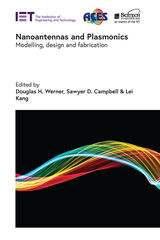
Nanoantennas and Plasmonics
Modelling, design and fabrication
Douglas H. Werner
The Institution of Engineering and Technology, 2020
This book presents cutting-edge research advances in the rapidly growing areas of nanoantennas and plasmonics as well as their related enabling technologies and applications. It provides a comprehensive treatment of the field on subjects ranging from fundamental theoretical principles and new technological developments, to state-of-the-art device design, as well as examples encompassing a wide range of related sub-areas. The content of the book also covers highly-directive nanoantennas, all-dielectric and tuneable/reconfigurable devices, metasurface optical components, and other related topics.
[more]

Nanobiosensors for Personalized and Onsite Biomedical Diagnosis
Pranjal Chandra
The Institution of Engineering and Technology, 2016
Nanobiosensors have been successful for in vitro as well as in vivo detection of several biomolecules and it is expected that this technology will revolutionize point-of-care and personalized diagnostics, and will be extremely applicable for early disease detection and therapeutic applications. This book describes the emerging nanobiosensor technologies which are geared towards onsite clinical applications and those which can be used as a personalised diagnostic device. Biosensor technologies and materials covered include electrochemical biosensors; implantable microbiosensors; microfluidic technology; surface plasmon resonance-based technologies; optical and fibre-optic sensors; lateral flow biosensors; lab on a chip; nanomaterials based (graphene, nanoparticles, nanocomposites, and other carbon nanomaterial) sensors; metallic nanobiosensors; wearable and doppler-based non-contact vital signs biosensors; and technologies for smartphone based disease diagnosis. Clinical applications of these technologies covered in this book include detection of various protein biomarkers, small molecules, cancer and bacterial cells; detection of foodborne pathogens; generation and optimisation of antibodies for biosensor applications; microRNAs and their applications in diagnosis for osteoarthritis; detection of circulating tumor cells; online heartbeat monitoring; analysis of drugs in body fluids; sensing of nucleic acids; and monitoring oxidative stress.
[more]

Nano-CMOS and Post-CMOS Electronics
Circuits and design, Volume 2
Saraju P. Mohanty
The Institution of Engineering and Technology, 2016
The demand for ever smaller and portable electronic devices has driven metal oxide semiconductor-based (CMOS) technology to its physical limit with the smallest possible feature sizes. This presents various size-related problems such as high power leakage, low-reliability, and thermal effects, and is a limit on further miniaturization. To enable even smaller electronics, various nanodevices including carbon nanotube transistors, graphene transistors, tunnel transistors and memristors (collectively called post-CMOS devices) are emerging that could replace the traditional and ubiquitous silicon transistor. This book explores these nanoelectronics at the circuit and systems levels including modelling and design approaches and issues.
[more]
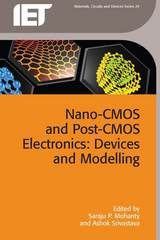
Nano-CMOS and Post-CMOS Electronics
Devices and modelling, Volume 1
Saraju P. Mohanty
The Institution of Engineering and Technology, 2016
The demand for ever smaller and portable electronic devices has driven metal oxide semiconductor-based (CMOS) technology to its physical limit with the smallest possible feature sizes. This presents various size-related problems such as high power leakage, low-reliability, and thermal effects, and is a limit on further miniaturization. To enable even smaller electronics, various nanodevices including carbon nanotube transistors, graphene transistors, tunnel transistors and memristors (collectively called post-CMOS devices) are emerging that could replace the traditional and ubiquitous silicon transistor. This book explores these nanoelectronics at the device level including modelling and design.
[more]
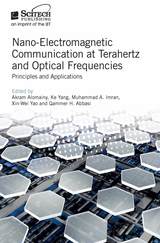
Nano-Electromagnetic Communication at Terahertz and Optical Frequencies
Principles and Applications
Akram Alomainy
The Institution of Engineering and Technology, 2020
Recent advancements in carbon and molecular electronics have opened the door to a new generation of electronic nanoscale components. This book outlines the basic principles of electromagnetic-based communication at this nanoscale using terahertz and optical frequencies with a focus on theoretical principles and applications. It answers the questions: How can nano-devices communicate with each other by applying electromagnetic techniques? Do conventional communication and networking schemes and principles still apply? How feasible is it to deploy such networks with various applications?
[more]
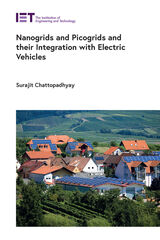
Nanogrids and Picogrids and their Integration with Electric Vehicles
Surajit Chattopadhyay
The Institution of Engineering and Technology, 2022
Nanogrids are small energy grids, powered by various generators often including photovoltaics. For example, a nanogrid might supply a village in a rural area and allow that village to trade its surplus energy. A picogrid is a still smaller energy grid. IRENA defines nanogrids as systems handling up to 5 kW of power while picogrids handle up to 1 kW.
[more]
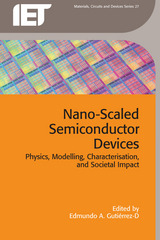
Nano-Scaled Semiconductor Devices
Physics, modelling, characterisation, and societal impact
Edmundo A. Gutiérrez-D
The Institution of Engineering and Technology, 2016
The rapid evolution of integrated circuit technology has brought with it many new materials and processing steps at the nano-scale which boost the electrical performance of devices, resulting in faster and more functionally-complex electronics. However, working at this reduced scale can bring second order effects that degrade efficiency and reliability.
[more]

Nanotechnologies
Michel Wautelet
The Institution of Engineering and Technology, 2009
How can single atoms be manipulated? Are the laws of physics still valid at the nanostructure scale? How could nanotechnologies help cure disease? What are the application fields of nanotechnologies and what ethical issues do they raise? These questions and many others are answered in this clearly presented, fascinating book.
[more]
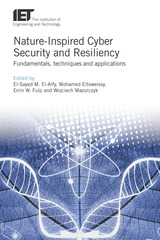
Nature-Inspired Cyber Security and Resiliency
Fundamentals, techniques and applications
El-Sayed M. El-Alfy
The Institution of Engineering and Technology, 2019
With the rapid evolution of cyberspace, computing, communications and sensing technologies, organizations and individuals rely more and more on new applications such as fog and cloud computing, smart cities, Internet of Things (IoT), collaborative computing, and virtual and mixed reality environments. Maintaining their security, trustworthiness and resilience to cyber-attacks has become crucial which requires innovative and creative cyber security and resiliency solutions. Computing algorithms have been developed to mimic the operation of natural processes, phenomena and organisms such as artificial neural networks, swarm intelligence, deep learning systems, biomimicry, and more. The amazing characteristics of these systems offer a plethora of novel methodologies and opportunities to cope with emerging cyber challenges.
[more]
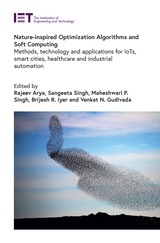
Nature-inspired Optimization Algorithms and Soft Computing
Methods, technology and applications for IoTs, smart cities, healthcare and industrial automation
Rajeev Arya
The Institution of Engineering and Technology, 2023
We have witnessed an explosion of research activity around nature-inspired computing and bio-inspired optimization techniques, which can provide powerful tools for solving learning problems and data analysis in very large data sets. To design and implement optimization algorithms, several methods are used that bring superior performance. However, in some applications, the search space increases exponentially with the problem size. To overcome these limitations and to solve efficiently large scale combinatorial and highly nonlinear optimization problems, more flexible and adaptable algorithms are necessary.
[more]
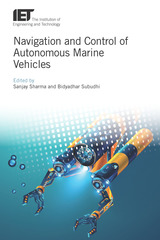
Navigation and Control of Autonomous Marine Vehicles
Sanjay Sharma
The Institution of Engineering and Technology, 2019
Robotic marine vessels can be used for a wide range of purposes, including defence, marine science, offshore energy and hydrographic surveys, and environmental surveys and protection. Such vessels need to meet a variety of criteria: they must be able to operate in salt water, and to communicate and be controlled over large distances, even when submerged or in inclement weather. Further challenges include 3D navigation of individual vehicles, groups or squadrons.
[more]
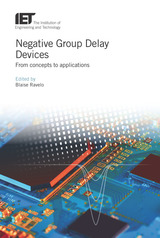
Negative Group Delay Devices
From concepts to applications
Blaise Ravelo
The Institution of Engineering and Technology, 2019
Negative Group Delay Devices: From concepts to applications introduces the theoretical concept, analysis, design methodology and implementation of negative group delay (NGD). The NGD concept is a recent topic in electrical and electronic engineering research based on an unconventional function; the generation of an output signal seemingly in time-advance of the input signal. The NGD function has been exploited to develop experimental high-performance electronic devices, and novel design features of radio frequency (RF) and microwave electronic devices, such as filters, power dividers and amplifiers. Examples include the realization of non-Foster reactive elements, shortening or reducing delay lines, enhancing the efficiency of feedforward linear amplifiers, improvement of phase shifters accuracy and bandwidth, equalization of electrical interconnect effects for the microwave, digital and mixed signal integrity improvement, and minimizing beam-squint in series-fed antenna arrays.
[more]

Network as a Service for Next Generation Internet
Qiang Duan
The Institution of Engineering and Technology, 2017
With the rapid progress in networking and computing technologies, a wide variety of network-based computing applications have been developed and deployed on the internet. Flexible and effective service provisioning for supporting the diverse applications is a key requirement for the next generation internet. However, the current internet lacks sufficient capability for meeting this requirement, mainly due to the ossification caused by tight coupling between network architecture and infrastructure. Service-Oriented Architecture (SOA), which has been widely adopted in cloud computing via the Infrastructure-as-a-Service (IaaS), Platform-as-a-Service (PaaS), and Software-as-a-Service (SaaS) paradigms, may be applied in networking to decouple network architecture and infrastructure; thus offering a promising approach to addressing some fundamental challenges to the next generation Internet. In general, such a service-oriented networking paradigm is referred to as Network-as-a-Service (NaaS). This book presents the state of the art of the NaaS paradigm, including its concepts, architecture, key technologies, applications, and development directions for future network service provisioning. It provides readers with a comprehensive reference that reflects the most current technical developments related to NaaS.
[more]
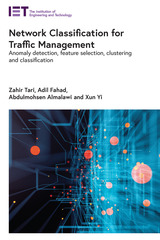
Network Classification for Traffic Management
Anomaly detection, feature selection, clustering and classification
Zahir Tari
The Institution of Engineering and Technology, 2020
With the massive increase of data and traffic on the Internet within the 5G, IoT and smart cities frameworks, current network classification and analysis techniques are falling short. Novel approaches using machine learning algorithms are needed to cope with and manage real-world network traffic, including supervised, semi-supervised, and unsupervised classification techniques. Accurate and effective classification of network traffic will lead to better quality of service and more secure and manageable networks.
[more]
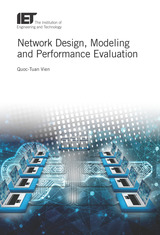
Network Design, Modelling and Performance Evaluation
Quoc-Tuan Vien
The Institution of Engineering and Technology, 2019
Designed for ICT professionals involved in the planning, design, development, testing and operation of network services, this book is ideal for self-teaching. It will help readers evaluate a network situation and identify the most important aspects to be monitored and analysed. The author provides a detailed step by step methodological approach to network design from the analysis of the initial network requirements to architecture design, modelling, simulation and evaluation, with a special focus on statistical and queuing models. The chapters are structured as a series of independent modules that can be combined for designing university courses. Practice exercises are given for selected chapters, and case studies will take the reader through the whole network design process.
[more]

Neural Network Applications in Control
G.W. Irwin
The Institution of Engineering and Technology, 1995
Neural networks are an exciting technology of growing importance in real industrial situations, particularly in control and systems. This book aims to give a detailed appreciation of the use of neural nets in these applications; it is aimed particularly at those with a control or systems background who wish to gain an insight into the technology in the context of real applications.
[more]
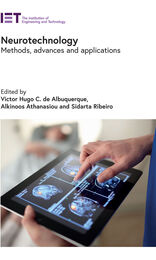
Neurotechnology
Methods, advances and applications
Victor Hugo C. de Albuquerque
The Institution of Engineering and Technology, 2020
This book focuses on recent advances and future trends in the methods and applications of technologies that are used in neuroscience for the evaluation, diagnosis and treatment of neurological diseases and conditions or for the improvement of quality of life. The editors have assembled contributions from a range of international experts, to bring together key topics in neurotechnology, neuroengineering, and neurorehabilitation. The book explores biomedical signal processing, neuroimaging acquisition and analysis, computational intelligence, virtual and augmented reality, biometrics, machine learning and neurorobotics, human machine interaction, mobile apps and discusses ways in which these neural technologies can be used as diagnostic tools, research methods, treatment modalities, as well as in devices and apps in everyday life.
[more]
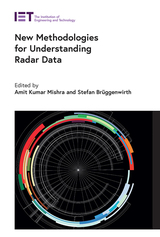
New Methodologies for Understanding Radar Data
Amit Kumar Mishra
The Institution of Engineering and Technology, 2021
Research in the domain of radar signal understanding has seen interesting advances in recent years, mainly due to the developments around cognitive radar and the use of modern machine learning algorithms. This book brings together these strands of research into a coherent and holistic picture, presenting a consolidated approach to understanding radar signals.
[more]
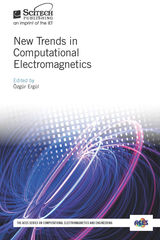
New Trends in Computational Electromagnetics
Özgür Ergül
The Institution of Engineering and Technology, 2020
Computational electromagnetics is an active research area concerned with the development and implementation of numerical methods and techniques for rigorous solutions to physical problems across the entire spectrum of electromagnetic waves - from radio frequencies to gamma rays. Numerical methods and techniques developed and implemented in this area are now used every day to solve complex problems in diverse application areas, including but not limited to antennas, telecommunications, biomedical imaging, sensing, energy harvesting, nanotechnology, and optics. The purpose of this book is to provide a broad overview of the recent efforts in computational electromagnetics to develop and implement more robust, stable, accurate, and efficient algorithms.
[more]

Next-Generation Cognitive Radar Systems
Kumar Vijay Mishra
The Institution of Engineering and Technology, 2024
Next-Generation Cognitive Radar Systems brings together contributions from leading researchers who are engaged in the research and development of next generation cognitive abilities in radar engineering. It features recent advances in the theory and applications of advanced Cognitive Radar (CR) tools and examines emerging challenges. The chapters include mathematical and computational methods to combat important CR challenges as well as the applications of recent theories and algorithms to various applied CR aspects.
[more]
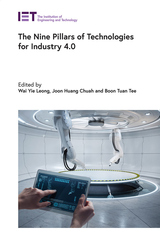
The Nine Pillars of Technologies for Industry 4.0
Wai Yie Leong
The Institution of Engineering and Technology, 2021
Industry 4.0 refers to automation and data exchange in manufacturing technologies. From innovative research, challenges, solutions and strategies to real-world case studies, the aim of this edited book is to focus on the nine pillars of technology that are supporting the transition to Industry 4.0 and smart manufacturing. The nine pillars include the internet of things, cloud computing, autonomous and robotics systems, big data analytics, augmented reality, cyber security, simulation, system integration, and additive manufacturing. A key role is played by the industrial IoTs and state-of-the-art technologies such as fog and edge computing, advanced data analytics, innovative data exchange models, artificial intelligence, machine learning, mobile and network technologies, robotics and sensors.
[more]
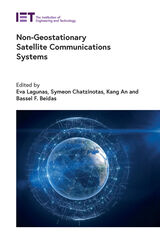
Non-Geostationary Satellite Communications Systems
Eva Lagunas
The Institution of Engineering and Technology, 2022
Recent technological advances have made possible the creation of a chain of non-geostationary satellite orbit (NGSO) communications systems. Such systems offer the advantages of ubiquity, relatively low costs, and upgradable infrastructure that enables the use of innovative on-board technologies. This evolution opens up a plethora of opportunities for massive self-organized, reconfigurable and resilient NGSO constellations, which can operate as a global network.
[more]
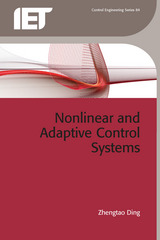
Nonlinear and Adaptive Control Systems
Zhengtao Ding
The Institution of Engineering and Technology, 2013
An adaptive system for linear systems with unknown parameters is a nonlinear system. The analysis of such adaptive systems requires similar techniques to analyse nonlinear systems. Therefore it is natural to treat adaptive control as a part of nonlinear control systems. Nonlinear and Adaptive Control Systems treats nonlinear control and adaptive controlin a unified framework, presenting the major results at a moderate mathematical level, suitable for MSc students and engineers with undergraduate degrees. Topics covered include introduction to nonlinear systems; state space models; describing functions forcommon nonlinear components; stability theory; feedback linearization; adaptive control; nonlinear observer design; backstepping design; disturbance rejection and output regulation; and control applications, including harmonic estimation and rejection inpower distribution systems, observer and control design for circadian rhythms, and discrete-time implementation of continuous-timenonlinear control laws.
[more]
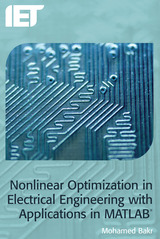
Nonlinear Optimization in Electrical Engineering with Applications in MATLAB®
Mohamed Bakr
The Institution of Engineering and Technology, 2013
Nonlinear Optimization in Electrical Engineering with Applications in MATLAB® provides an introductory course on nonlinear optimization in electrical engineering, with a focus on applications such as the design of electric, microwave, and photonic circuits, wireless communications, and digital filter design.
[more]

Non-linear Predictive Control
Theory and practice
Basil Kouvaritakis
The Institution of Engineering and Technology, 2001
Model-based predictive control (MPC) has proved to be a fertile area of research. It has gained enormous success within industry, especially in the context of process control. Nonlinear model-based predictive control (NMPC) is of particular interest as this best represents the dynamics of most real plant. This book collects together the important results which have emerged in this field, illustrating examples by means of simulations on industrial models. In particular there are contributions on feedback linearisation, differential flatness, control Lyapunov functions, output feedback, and neural networks. The international contributors to the book are all respected leaders within the field, which makes for essential reading for advanced students, researchers and industrialists in the field of control of complex systems.
[more]
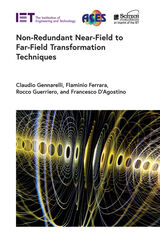
Non-Redundant Near-Field to Far-Field Transformation Techniques
Claudio Gennarelli
The Institution of Engineering and Technology, 2022
Near-field (NF) measurement techniques and the related NF to far-field (FF) transformations are gaining interest for their ability to allow an accurate evaluation of the radiation characteristics of those antennas whose electric sizes do not make it possible to perform direct FF measurements in a controlled and reflection-free environment, such as the anechoic chamber.
[more]
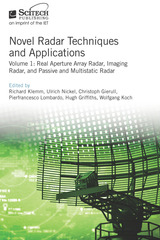
Novel Radar Techniques and Applications
Real aperture array radar, Imaging radar, and Passive and multistatic radar, Volume 1
Richard Klemm
The Institution of Engineering and Technology, 2018
Novel Radar Techniques and Applications presents the state-of-the-art in advanced radar, with emphasis on ongoing novel research and development and contributions from an international team of leading radar experts.
[more]
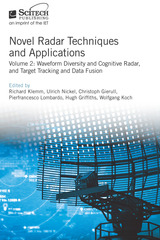
Novel Radar Techniques and Applications
Waveform diversity and cognitive radar and Target tracking and data fusion, Volume 2
Richard Klemm
The Institution of Engineering and Technology, 2018
Novel Radar Techniques and Applications presents the state-of-the-art in advanced radar, with emphasis on ongoing novel research and development and contributions from an international team of leading radar experts. Each section gives an overview of the latest research and perspectives of the future, and includes a number of chapters dedicated to specific techniques in conjunction with existing operational, experimental or conceptual applications.
[more]
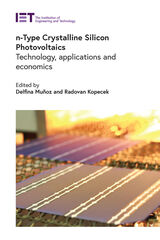
n-Type Crystalline Silicon Photovoltaics
Technology, applications and economics
Delfina Muñoz
The Institution of Engineering and Technology, 2022
Most solar cells currently in commercial use are p-type solar cells, due to their historically lower cost and ease of manufacture compared to n-type solar cells. However, due to improved manufacturing technology and falling cost in general, the cost difference between the two types has shrunk, making n-type solar cells an attractive option for future commercial high-efficiency solar cells.
[more]

Nuclear Power
Janet Wood
The Institution of Engineering and Technology, 2007
This title is the first of four 'new-look' books in the Power and Energy series that are aimed at industry professionals rather than academics. Nuclear Power explains in detail how nuclear power works, its costs, its benefits as part of the electricity supply system, and also examines its record.
[more]

Numerical Analysis of Power System Transients and Dynamics
Akihiro Ametani
The Institution of Engineering and Technology, 2015
This book describes the three major power system transients and dynamics simulation tools based on a circuit-theory approach that are widely used all over the world (EMTP-ATP, EMTP-RV and EMTDC/PSCAD), together with other powerful simulation tools such as XTAP.
[more]
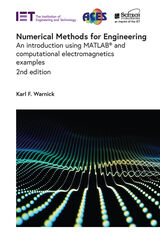
Numerical Methods for Engineering
An introduction using MATLAB® and computational electromagnetics examples
Karl F. Warnick
The Institution of Engineering and Technology, 2020
The revised and updated second edition of this textbook teaches students to create modeling codes used to analyze, design, and optimize structures and systems used in wireless communications, microwave circuits, and other applications of electromagnetic fields and waves. Worked code examples are provided for key algorithms using the MATLAB technical computing language.
[more]

Numerical Methods for Engineering
An introduction using MATLAB® and computational electromagnetics examples
Karl F. Warnick
The Institution of Engineering and Technology, 2011
This textbook teaches students to create computer codes used to engineer antennas, microwave circuits, and other critical technologies for wireless communications and other applications of electromagnetic fields and waves. Worked code examples are provided for MATLAB technical computing software. It is the only textbook on numerical methods that begins at the undergraduate engineering student level but brings students to the state-of-the-art by the end of the book. It focuses on the most important and popular numerical methods, going into depth with examples and problem sets of escalating complexity. This book requires only one core course of electromagnetics, allowing it to be useful both at the senior and beginning graduate levels. Developing and using numerical methods in a powerful tool for students to learn the principles of intermediate and advanced electromagnetics. This book fills the missing space of current textbooks that either lack depth on key topics (particularly integral equations and the method of moments) and where the treatment is not accessible to students without an advanced theory course. Important topics include: Method of Moments; Finite Difference Time Domain Method; Finite Element Method; Finite Element Method-Boundary Element Method; Numerical Optimization; and Inverse Scattering.
[more]
READERS
Browse our collection.
PUBLISHERS
See BiblioVault's publisher services.
STUDENT SERVICES
Files for college accessibility offices.
UChicago Accessibility Resources
home | accessibility | search | about | contact us
BiblioVault ® 2001 - 2024
The University of Chicago Press









